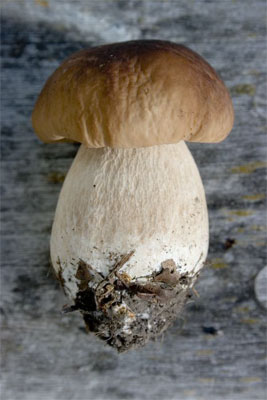I've been tagged for a food blog meme*, which is a first (thanks Bron). Not being a proper food blog, but a blog that does food from time, I'm probably a bit of an interloper - and I'm certainly going to find it hard to "tag" five more food blogs (one of the rules). I'll do my best.
The meme comes from The Traveller's Lunchbox, and the idea is to come up with five "things you've eaten and think that everyone should eat at least once before they die". It's an interesting challenge, and over the last couple of days I've been remembering all sorts of meals in all sorts of places. And therein lies one of the challenges. I have especially fond memories of a plateau de fruits de mer, eaten in a restaurant on the inner harbour at La Rochelle, but do I remember it because of the excellence of the plateau, or the happy combination of circumstances surrounding that meal? Same thing with a bottle of white vin de savoie that was elevenses at a little restaurant on the slopes at Serre Chevalier. A magic moment to be sure, but worth inflicting that wine on everyone? Probably not. So I have settled on five things that I have eaten and enjoyed and remembered and loved, not simply because of time and place, but on culinary merit (though you may choose to differ). And whakapapa* plays a part too.
1. Andouillete
Offal sausage, or awful sausage? A specialty of Troyes, and found in every Relais Routiers in France, this is a working man's saucisse, a sausage of strong flavour and challenging appearance. Cut it open and admire the strips of pork tripe and large intestine, flavoured with onion and parsley. I've seen grown women turn away in horror... but with good mustard and some fine pommes frites, the andouillette is something I have to eat at least once when visiting la belle France.
2. Bara lawr
Welsh seaweed dish, known to the Sais as laver bread, traditionally eaten fried in oatmeal with bacon for breakfast. The seaweed is quite common around the world (I've eaten it in NZ) - there is a Japanese name, but I can't recall it - and in Wales it's washed and then boiled for four hours or more until it's a green glutinous mass, still redolent of the sea. And if the bacon you eat with it is farm-cured and bought in the market at Carmarthen or Cardigan, then you have something simple but wonderful.
3. Germknodel
This is pretty close to a time and place thing, because I have only eaten it in restaurants on the slopes at St Anton or Lech, although it is a speciality throughout the Tirol. Consider a dumpling the size of a baby's head stuffed with stewed plums, topped with poppy seeds and icing sugar and dressed with melted butter, and reflect on the challenge this presents to post-prandial skiing. Delicious, but difficult.
4. A sun-ripened apricot, warm from the tree
Looking through other bloggers' lists of five, there are plenty of exhortations to take freshly picked, sun-ripened or just landed things and apply them to the palate. So I am not being original, but I include my apricot because I planted apricots (and other fruit trees) at Limestone Hills because this was an experience I'd read about (Jane Grigson's Fruit Book, I think) and wanted to try. Every summer I watch the apricots, willing them to ripen, so that I can revel in the sheer apricotness of the fresh, sun-warmed article. This isn't just worth doing, it's worth moving to a place where it's possible in order to do it.
5. Tuber magnatum, on anything
No suprises here. The first meal of this truffle set in train a sequence of events that led me to Limestone Hills, and it is one of the tragedies of modern science that no-one has yet worked out how to successfully cultivate this fungus (though there are tantalising hints that it might soon be possible). Not oil - never oil - just the fresh article, shaved thinly on a buttery tagliatelle, or plain risotto, or stirred into and shaved onto an emperor amongst omelettes. So good I wrote a book about it.
So who to "tag" with this: I can't do five, but I will suggest that Mark Bernstein - another occasional foodie like me - might like to have a go.


.jpg)


